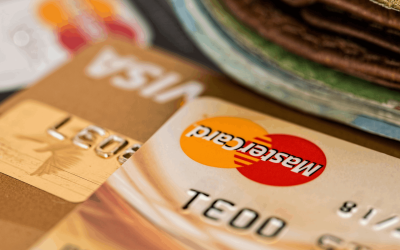Personal injury claims are complex for multiple reasons. Typically, insurance companies want to find ways to reduce the amount of damages you receive. One way to do that is to prove that you had pre-existing conditions that are the true cause of your injury or that they played a role in your current situation in some way.
By working with Vanden Heuvel & Dineen, S.C., you receive exceptional legal support from an attorney who can help you avoid claims like this. Here is what you need to know about pre-existing conditions and their impact on your personal injury claims.
Understanding Pre-Existing Condition
A pre-existing condition is some type of injury or illness that you had prior to the accident. Some of the most common forms of pre-existing conditions that impact personal injury claims include:
- Old injuries you received care for or spoke about
- Congenital conditions that impacted the situation or accident
- Chronic illnesses that contributed to the outcome
Pre-existing conditions complicate personal injury claims. However, by distinguishing between old and new injuries and providing clarity to the court on what your losses are, you may be able to recover your damages fairly, even with pre-existing conditions.
For example, if you have a known back problem and are in a car accident, the personal injury claim may have to take into consideration the existing back injury. Did it influence your injury from the accident? Did it make your injury from the accident worse because it was present?
Legal Principles and Framework
Consider the following legal aspects and how they could impact you.
Eggshell plaintiff doctrine
This doctrine is a type of protection for the plaintiff when they have a pre-existing condition that contributes to their fragility and makes them more likely to suffer an injury. It is often called the thin skull rule. It makes the defendant liable for your unforeseeable and uncommon reactions to the defendant’s negligence.
Comparative negligence
Another important concept is comparative negligence, which states that you may be partially responsible for the injury. Under comparative negligence laws in Wisconsin, the victim may be specifically vulnerable to an injury because of a pre-existing condition. However, even in that situation, the plaintiff is still liable to receive and recover damages if it can be shown that the at-fault party impacted those existing conditions.
Disclosure requirements
It is critical that if you have any pre-existing conditions, you voice those during your claim process. If you fail to provide clarity that you do have a pre-existing condition, and the court learns of it later (or the defendant does), this can lead to complications in your claim. It creates a sense of a less-than-trustworthy relationship between you and the other party. Disclosure of medical history that is impactful to the case could lead to your case being thrown out.
Providing Aggravation of Pre-Existing Conditions
You were hurt by the negligence of another party, and their actions caused your injuries. Hands down, they should cover your losses. Consider the following aspects of this process when pre-existing conditions exist.
Burden of proof
You must be clear and transparent about any pre-existing conditions you have when filing a personal injury claim. However, the burden of proof on the other party is to show that their actions did not worsen the condition. Clarity on whether it is an aggravation of an old injury or a new injury is also necessary to move your case forward.
Medical evidence
Medical records and expert testimony may be used to help build your case. That includes careful documentation of old and new injuries. Evidence from your doctor, lab reports, and other data can help to clearly document the difference in your injuries and clarify the current injury’s relation to the accident.
Causation
To prove negligence and recover compensation, you must prove the other party caused the injury and losses you suffered. Establishing a clear link between the accident and the aggravation of the pre-existing condition is critical. That could include providing evidence from medical reports and expert statements, which can help to do this.
Core to this is having evidence that the accident worsened the condition and not that the condition was naturally progressing.
Strategies for Claimants
There are several key factors to take into consideration when building your case.
Gather comprehensive medical records
The more documented proof you have of your injury both before and after the accident, the better. Medical records can show how the injury has changed over time and help support your claim that the accident is what worsened your condition.
Seeking expert medical opinions
It is also necessary to seek out clarification from respected medical professionals who can offer supporting claims and arguments for you. Note that you need the right medical expert who can attest to your specific condition and the progression of that condition.
Detailed health journals
Having a detailed health journal that logs the way you feel, the limitations you have at various points, and the overall implications of your injuries helps to substantiate your claims. It provides a very clear indication of what you are facing and what changed after the accident.
Insurance Company Tactics
Insurance companies will use any evidence and information they have to disprove your claims, and often, they are going to be very successful at it if you do not have a plan in place. Consider some of the ways insurance companies may work to reduce your claims:
- They may try to prove the accident is not directly the cause of your symptoms.
- They may try to blame pre-existing conditions on why your condition has worsened.
- Some may dispute causation at all.
It will be up to you and your attorney to counter those claims. That will include showing medical evidence that documents your claim and refutes theirs. It may be necessary to provide testimonies from character witnesses or medical experts that back up your claims.
Legal Representation and Support
The complexity of a personal injury claim when there are instances of pre-existing conditions makes it critical to hire an attorney to support you. An experienced personal injury attorney will have the confidence and skill to not only build your case for you but also to disprove any statements the insurance company tries to make.
Your attorney will also have specialized knowledge of the pre-existing conditions you have and offer insight to you on your legal options. Your attorney may be able to help overcome numerous challenges in this process, such as not having recent medical labs to show your condition had not progressed until after the accident.
Every case is unique, but your attorney will gather insight into what legal strategies may apply to your situation. Your attorney will also use previous cases like your own to help document what occurred and why.
Getting the Legal Guidance You Need Matters
In a legal situation like this where you have insurance companies and medical experts fighting over your right to receive compensation, having a skilled personal injury attorney in Wisconsin can be critical. Seek help from an attorney with specific experience in pre-existing conditions like your own.
To learn how we can help you, set up a consultation with Vanden Heuvel & Dineen, S.C., to discuss your case. This will allow you to learn what steps you need to take to recover the damages you deserve.




